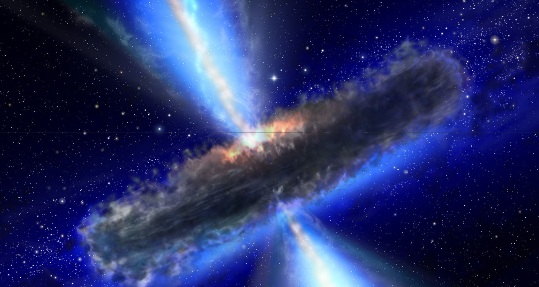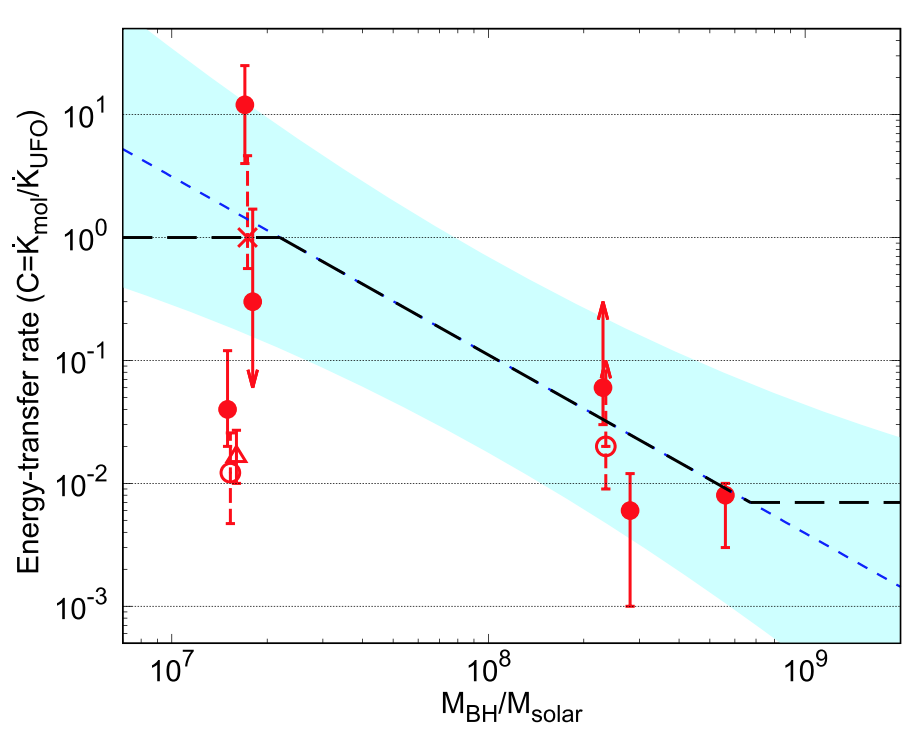CEA News, January 2019
Blowin' In the Wind: How black hole winds travel
All galaxies are thought to contain at their centre a supermassive black hole. In a similar sense to volcanos here on Earth, these galactic nuclei can be considered active or dormant. In the active case, a powerful wind is being launched from the vicinity of the supermassive black hole and, similar in a way to an active volcano, is thought to have a significant and disruptive impact on the galaxy around it, ultimately directing the evolution of this host galaxy.

Dr Misaki Mizumoto, of Durham University, and his international collaborators have recently published a study of how energy is transfered from such winds into their surroundings. They have found that the wind's kinetic energy is more efficiently carried out to the host galaxy for less supermassive black holes, leading to important implications for how galaxies and their supermassive black holes evolve.
A black hole not only sucks material in, but also blows material out. X-ray spectroscopic observations have shown blue-shifted absorption lines in many active galactic nuclei, the centres of galaxies that host supermassive black holes. These absorption features show that strong winds exist close in to such black holes (within 0.03 light years, which is approximately 10 times the size of the solar system). Their velocities are very fast - around 100,000 km/s - and thus these winds are termed “UltraFast Outflows (UFOs)”.
 The above graph shows the relation found between the energy
ratio of the two outflows and the black hole mass. When the ratio is one, all of
the UFO energy is transferred into the molecular outflow. On the
other hand, when the ratio is small, a large fraction of the UFO
energy is lost.
The above graph shows the relation found between the energy
ratio of the two outflows and the black hole mass. When the ratio is one, all of
the UFO energy is transferred into the molecular outflow. On the
other hand, when the ratio is small, a large fraction of the UFO
energy is lost.
On the other hand, slower (100-500 km/s) winds that are more extended (1500-3000 light years or approximately the size of the Orion Arm, the minor spiral arm that contains the solar system) have also been observed with radio telescopes and termed “molecular outflows“, due to their detection via emission from molecules (such as carbon-monoxide) in the wind. These winds can blow away a galaxy's interstellar medium, thus suppressing the flow of material onto the black hole, whilst also quenching star formation in the galaxy. However, the launching mechanism of the molecular outflow is still under debate.
One of the most plausible mechanisms is that the inner UFO drives the extended molecular outflow. If this mechanism is true, the kinetic energy of the UFO must be efficiently transferred into the molecular outflow. For all the galaxies in Dr Mizumoto's study whose molecular outflows were detected, the authors found a UFO for each one (via X-ray observations). Further to this, the authors found that the ratio of the kinetic energy of the molecular outflow to the UFO is larger when the black hole mass is smaller. This means that the above mechanism is plausible only when the black hole mass is small.
